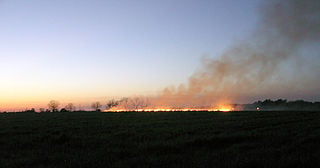Waste: there is a lot of it. There is that from the residential sector, the commercial sector, the industrial sector, the agricultural sector – you name it. The question is how to dispose of it all. Speaking to that last sector, fortunately in California, a ban on the burning of most agricultural waste is in effect.
Back on Jan. 28, 2014, a little over a year ago, I penned: “Garbage disposal: Rubbish not just for burning and dumping anymore.” As it had to do with state agricultural waste I wrote:
“‘[California Senate Bill] SB 705 was enacted in 2003 and bans open burning in three phases:
- June 1, 2005: Field crops, most pruning and weed abatement;
- June 1, 2007: Orchard Removals;
- June 1, 2010: Pruning from crops harvested off the ground, vineyard removal and removal of diseased materials.’
“‘Agricultural burning is currently a significant source of air pollution in the San Joaquin Valley, responsible for more than ten tons per day of particulates and more than 15 tons per day of smog forming chemicals,’ noted the SJVAPCD [San Joaquin Valley Air Pollution Control District].” (This information was sourced from: “Agricultural burn phase-out begins” in the “Valley Air News” July 2005 issue, an SJVAPCD publication).

I further stated: “The SJVAPCD then went on in the article in question to provide recommendations for alternatives to open-field agricultural burning such as chipping, the chopped-up material, for example, transported to co-generation facilities for further processing such as in electricity generation, or the ground-up material could be used for soil-amending purposes.”
But what about that co-generation or biomass burning; just how clean a process is it, anyway?
Well, the American Chemical Society in its Feb. 4, 2015 news release “Understanding air pollution from biomass burners used for heating: Real-Time Chemical Composition Analysis of Particulate Emissions from Woodchip Combustion” offers insight.
The ACS wrote: “As many places in the U.S. and Europe increasingly turn to biomass rather than fossil fuels for power and heat, scientists are focusing on what this trend might mean for air quality – and people’s health. One such study on wood-chip burners’ particulate emissions, which can cause heart and lung problems, appears in the ACS journal Energy & Fuels. The scientists say the findings could help manufacturers reduce the negative impact of this fuel in the future.”
What the researchers in the study found, according to the ACS in the release in question, was that particulate emissions varied depending on the stage of wood-chip combustion. If, on the other hand, wood-chip burning at a high efficiency level can be maintained, the amount of emissions can be reduced and this “could help the industry design units that are less polluting and less harmful to people.”
Pointed out in the release also was that according to Centers for Disease Control and Prevention estimates, if there were a reduction in particulate (dust, smoke, soot) emissions of just 10 percent, at least 13,000 American lives could be saved annually.
The logical next step would be to improve combustion efficiency at biomass and co-generation plants where warranted; where a marked improvement in combustion emissions could be made, in other words.
– Alan Kandel